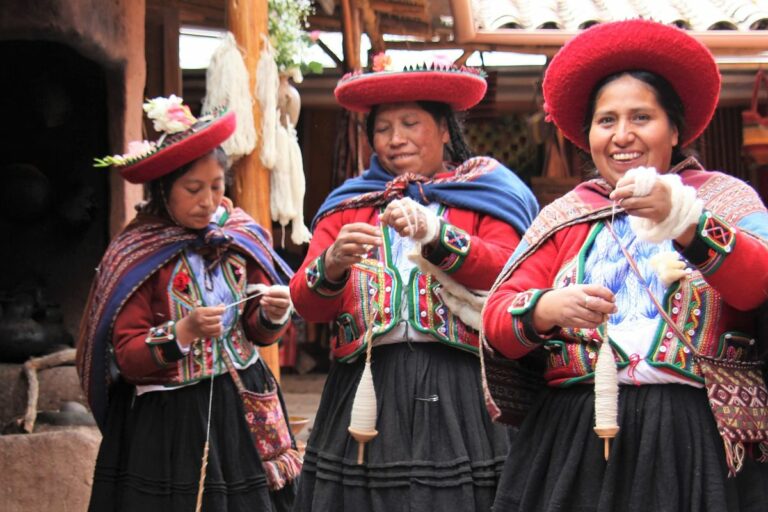Introduction: Dining in Peru
Peru is known for its diverse and flavorful cuisine, which is a blend of indigenous, Spanish, African, and Asian influences. A typical Peruvian meal consists of a main dish accompanied by sides such as rice, potatoes, and vegetables. The country also boasts a variety of traditional beverages, including chicha (a fermented corn drink) and pisco sour (a cocktail made with pisco brandy, lime juice, simple syrup, and egg whites). Dining in Peru is not just about consuming food, but also about experiencing the rich cultural heritage of the country.
Traditional Foods and Beverages
Peruvian cuisine is characterized by the use of native ingredients such as quinoa, potatoes, corn, and ají peppers. Some of the most popular dishes in Peru include ceviche (raw fish marinated in lime juice and spices), lomo saltado (stir-fried beef with onions and tomatoes), and causa (a layered dish made with mashed potatoes, avocado, and chicken or seafood). In addition to traditional dishes, Peru is also famous for its wide range of fruits, including lucuma, maracuya (passion fruit), and chirimoya (custard apple). As for beverages, Peruvian beer and wine are widely available, but many people choose to pair their meals with chicha or pisco sour.
Customs and Social Norms
In Peru, dining is considered a social activity and a way to connect with friends and family. It is common for people to share dishes and try each other’s food. However, it is also important to respect personal space and not reach across the table. It is considered impolite to begin eating before everyone is served, and it is customary to say “buen provecho” (enjoy your meal) before starting to eat. When finishing a meal, it is polite to leave a small amount of food on the plate to show that the portion was sufficient.
Table Manners and Etiquette
Peruvian table manners are similar to those in Western countries. It is considered impolite to slurp soup or to talk with your mouth full. When using utensils, the fork is held in the left hand and the knife in the right hand. If you are finished eating, it is customary to place your utensils together on the plate, with the handles facing to the right. In addition, it is considered rude to blow your nose or pick your teeth at the table.
Tipping and Payment
In Peru, tipping is not mandatory but is appreciated for good service. The standard amount for a tip is 10% of the total bill. However, some restaurants may include a service charge on the bill, so it’s always a good idea to check before tipping. As for payment, most restaurants in Peru accept credit cards, but it’s always wise to carry some cash just in case.
Conclusion: Experiencing Peruvian Cuisine
Dining in Peru is not just about the food, but also about the social and cultural experience. From traditional dishes to unique beverages, Peruvian cuisine offers a wide range of flavors and textures. By following some basic customs and table manners, visitors to Peru can fully immerse themselves in the country’s rich culinary heritage.

